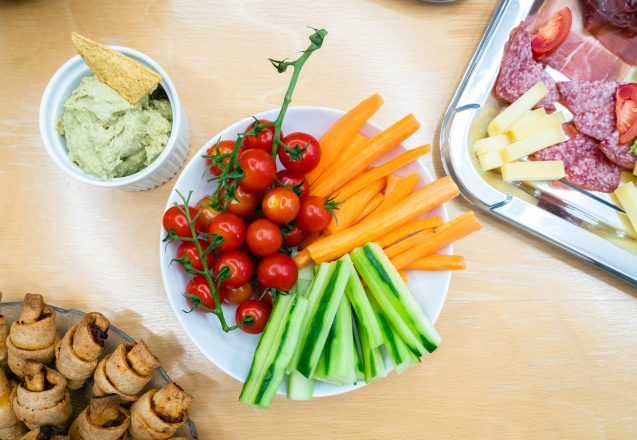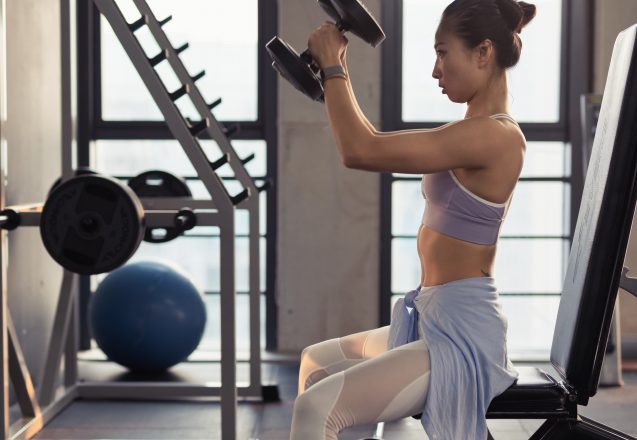Tips To Keep Your Holidays Happy And Healthy
 Whether you feel like hiding in the closet when holidays roll around or simply love the holidays, but find you can’t seem to keep up with all the demands, it’s time to make changes. You can keep your holidays happy and healthy in Irvine, CA, by planning ahead, taking time for yourself and focusing on what’s really important in your life. That’s easier to say than to do. After all, where do you find time for yourself when there are so many tugs on your time, making it impossible to keep up the pace.
Whether you feel like hiding in the closet when holidays roll around or simply love the holidays, but find you can’t seem to keep up with all the demands, it’s time to make changes. You can keep your holidays happy and healthy in Irvine, CA, by planning ahead, taking time for yourself and focusing on what’s really important in your life. That’s easier to say than to do. After all, where do you find time for yourself when there are so many tugs on your time, making it impossible to keep up the pace.
Prioritizing is the key.
For most people, family comes first. After all, that’s what the holidays are all about, family. Jobs and paying bills are the next priority. Beyond that, you need to identify not only which ones tasks are more important, but also which ones need to be done immediately. If you can delay it, do that. If you can delete it, of course that’s the thing to do. Don’t forget, you can also delegate some of the responsibility or combine it with another priority and do it. An example of that would be to spend some great family time baking cookies together for the holidays.
Taking care of your family means taking care of yourself.
If you’re not at peak health or stressed out, getting everything done is even more difficult. Stress comes in many forms, but it’s always there waiting for you. Learn some meditation or deep breathing techniques to help lower the stress levels in minutes. Sometimes, even that won’t help, so burning off those hormones of stress is the next action. Make sure that your priority list includes a program of regular exercise. You’ll feel energized, less stressed and get more done when you stick with your program of exercise.
Eating healthy is easier when you plan ahead.
Sure it’s a time for sugar cookies and Christmas treats, but that doesn’t mean you can’t make meals healthier. Take an hour midweek and check out what’s on sale at the grocery. Create a week’s menus, including snacks. Make a shopping list and a family night of shopping on Friday. On the weekend, make all the meals for the week. Make extra and freeze some for the weeks ahead. Keep snacks and meals healthy. If you happen to eat a few treats during the week, it’s okay. Most of your meals will be super healthy and you’re allowed a few treats occasionally.
- If you don’t have a program of exercise, wing it. Walking more briskly, parking further from the door at the mall and spending less time circling or playing a game with the kids to zoom through chores can be a great start.
- Even if your day is full, don’t burn the midnight oil. Get adequate sleep. Not only will it keep you alert throughout the day and be heart healthy, you’ll also be less tempted to overeat. Lack of sleep increases the hunger hormone and reduces the hormone that makes you feel full.
- When you’re planning your day, keep an hour or two open, just in case things take longer. Have a few must do—but not necessarily today—items at the side that can be done if you find you have extra time.
- Plan something active for the whole family. Everyone, especially kids, will be glad to have an activity where they can run, make noise and get rid of the stress.



 Never use the excuse that you can’t eat healthy because it’s too hard, especially when you have this guide that makes healthy eating made simple. The first, and simplest, rule to remember, but not the easiest to follow, is to cut out added sugar. Cutting out sugar is tough for two reasons. First, it’s in almost everything. The next time you grab the catsup for your fries, check the ingredients. You’ll notice the high fructose corn syrup—a type of sugar—is high on the list. The easiest way to avoid it is to eat more whole foods, where you control the ingredients.
Never use the excuse that you can’t eat healthy because it’s too hard, especially when you have this guide that makes healthy eating made simple. The first, and simplest, rule to remember, but not the easiest to follow, is to cut out added sugar. Cutting out sugar is tough for two reasons. First, it’s in almost everything. The next time you grab the catsup for your fries, check the ingredients. You’ll notice the high fructose corn syrup—a type of sugar—is high on the list. The easiest way to avoid it is to eat more whole foods, where you control the ingredients.
 You’ve been told for ages that eating fat will definitely make you sick, but unfortunately, the mega study that supported that was paid for by the sugar industry. The truth is that sugar consumption, rather than fat consumption is more lethal to your health. It can cause metabolic disease and the most common form of metabolic disease is diabetes. Eating excess sugar can cause metabolic syndrome. That syndrome includes insulin resistance, the precursor to type II diabetes. It also leads to obesity including visceral fat—abdominal fat, high cholesterol, inflammation and high blood pressure.
You’ve been told for ages that eating fat will definitely make you sick, but unfortunately, the mega study that supported that was paid for by the sugar industry. The truth is that sugar consumption, rather than fat consumption is more lethal to your health. It can cause metabolic disease and the most common form of metabolic disease is diabetes. Eating excess sugar can cause metabolic syndrome. That syndrome includes insulin resistance, the precursor to type II diabetes. It also leads to obesity including visceral fat—abdominal fat, high cholesterol, inflammation and high blood pressure.
 If you haven’t heard of intermittent fasting before and think it’s new, be prepared to be surprised. There have been studies that date back a few centuries. One scientific study conducted on rats in the 1940s showed that intermittent fasting could prolong life. It kept the fasting rat looking younger and free of some of the diseases rats face as they aged. Great religious leaders have fasted for both body and spirit, so it does come with a history. However, intermittent fasting is different from the traditional fasting of the ancients. It’s all about when you eat.
If you haven’t heard of intermittent fasting before and think it’s new, be prepared to be surprised. There have been studies that date back a few centuries. One scientific study conducted on rats in the 1940s showed that intermittent fasting could prolong life. It kept the fasting rat looking younger and free of some of the diseases rats face as they aged. Great religious leaders have fasted for both body and spirit, so it does come with a history. However, intermittent fasting is different from the traditional fasting of the ancients. It’s all about when you eat.
 Losing weight takes more than just eating or drinking a magic formula. It takes adjusting your diet so it’s healthier and exercising regularly. However, there’s a new fad in weight loss called detox water. Some of my clients in Irvine, CA even use detox water recipes for weight loss. Does it work? The answer is yes and no. Detox water is water that’s been infused with fresh herbs, fruits and vegetables to add flavor and even a few extra nutrients. If you’re drinking it instead of a soft drink or even fruit juice, you’ll be cutting calories by drinking detox water and cutting sugar. So, yes, in that way it can be exceptional for aiding in weight loss.
Losing weight takes more than just eating or drinking a magic formula. It takes adjusting your diet so it’s healthier and exercising regularly. However, there’s a new fad in weight loss called detox water. Some of my clients in Irvine, CA even use detox water recipes for weight loss. Does it work? The answer is yes and no. Detox water is water that’s been infused with fresh herbs, fruits and vegetables to add flavor and even a few extra nutrients. If you’re drinking it instead of a soft drink or even fruit juice, you’ll be cutting calories by drinking detox water and cutting sugar. So, yes, in that way it can be exceptional for aiding in weight loss.
 Clients who visit us in Irvine, CA, often have big goals. Some that aren’t achievable in less than a few years. For these people who work to help them break down those goals and set monthly goals. That doesn’t negate that “big goal.” It just provides the steps to help them achieve those goals. Why would you want to do that? There’s a number of reasons. One of the biggest reason is motivation.
Clients who visit us in Irvine, CA, often have big goals. Some that aren’t achievable in less than a few years. For these people who work to help them break down those goals and set monthly goals. That doesn’t negate that “big goal.” It just provides the steps to help them achieve those goals. Why would you want to do that? There’s a number of reasons. One of the biggest reason is motivation.
 You probably notice when you don’t brush your teeth in the morning before you leave for work. In fact, if you forgot, you may even stop at a store to buy a toothbrush and toothpaste to brush when you get there. That’s because it’s become a habit to brush before you leave and if occasionally you forget you simply don’t feel right. You can follow a quick morning routine to help you get into shape, lose weight and stay fit. Don’t try to do everything at once.
You probably notice when you don’t brush your teeth in the morning before you leave for work. In fact, if you forgot, you may even stop at a store to buy a toothbrush and toothpaste to brush when you get there. That’s because it’s become a habit to brush before you leave and if occasionally you forget you simply don’t feel right. You can follow a quick morning routine to help you get into shape, lose weight and stay fit. Don’t try to do everything at once.
 No matter what the weather, I carry a water bottle everywhere. It’s partially because I like water. Somewhat because I get thirsty frequently, but also because water boosts my energy level without the high and low repercussions of a sugary soft drink. Water is good for you too. In fact, the brain is composed mostly of water, so you can see how staying hydrated can keep you more alert. The heart and brain contains 73 % water, the lungs have 83% and muscles and kidneys contain 79%.
No matter what the weather, I carry a water bottle everywhere. It’s partially because I like water. Somewhat because I get thirsty frequently, but also because water boosts my energy level without the high and low repercussions of a sugary soft drink. Water is good for you too. In fact, the brain is composed mostly of water, so you can see how staying hydrated can keep you more alert. The heart and brain contains 73 % water, the lungs have 83% and muscles and kidneys contain 79%.
 It’s hard enough to lose weight, but nearly impossible to prevent pounds from returning. Keeping pounds off is especially difficult if you dieted. Dieting doesn’t work because it always ends. At that point people go back to the eating habits that put on the weight in the first place. Rather than dieting to lose weight, people need to make lifestyle changes to not only take off pounds but keep them off permanently.
It’s hard enough to lose weight, but nearly impossible to prevent pounds from returning. Keeping pounds off is especially difficult if you dieted. Dieting doesn’t work because it always ends. At that point people go back to the eating habits that put on the weight in the first place. Rather than dieting to lose weight, people need to make lifestyle changes to not only take off pounds but keep them off permanently.
 If you want to be healthy, you must eat healthy food and that includes what you drink. While there are so many factors that can determine whether you’ll be healthy or not, exercising and eating/drinking healthy are two of the most important. That’s especially important since these are factors that you can control. Today, obesity has reached the level that it’s number one on the list of factors in preventable diseases. Changing your eating habits doesn’t have to be hard. It all starts with one small change.
If you want to be healthy, you must eat healthy food and that includes what you drink. While there are so many factors that can determine whether you’ll be healthy or not, exercising and eating/drinking healthy are two of the most important. That’s especially important since these are factors that you can control. Today, obesity has reached the level that it’s number one on the list of factors in preventable diseases. Changing your eating habits doesn’t have to be hard. It all starts with one small change.